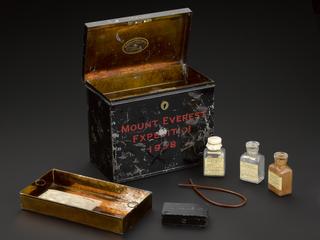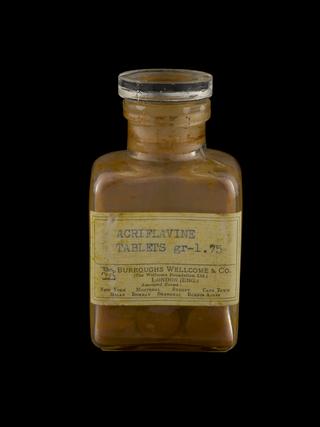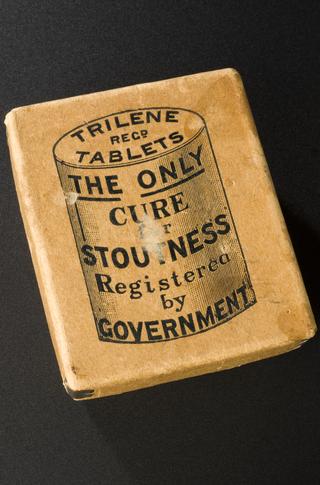




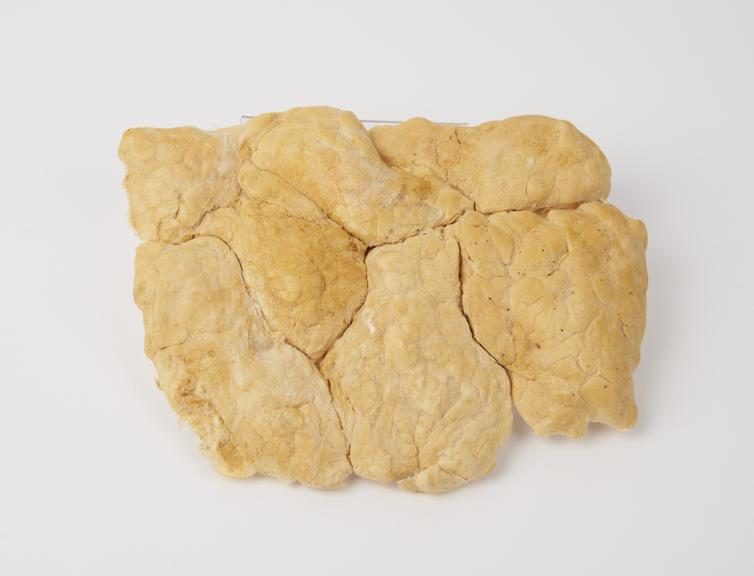
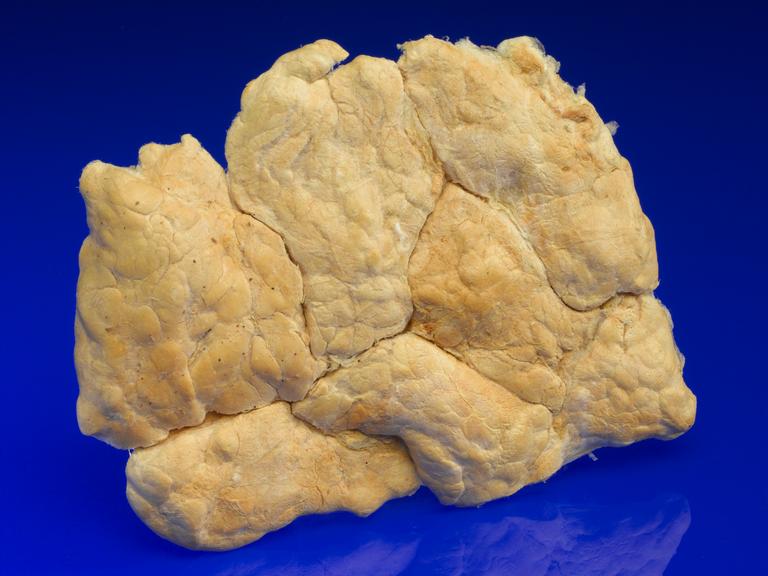

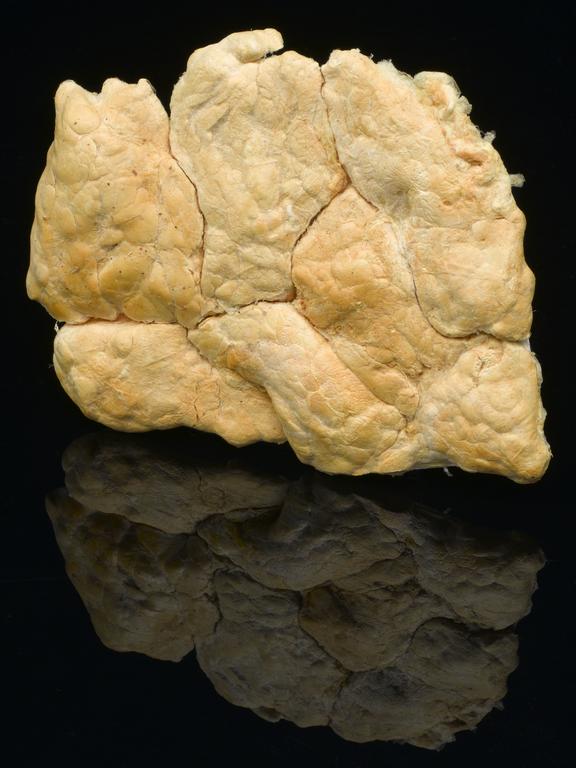
Freeze dried pig pancreas, as used for insulin production. Pancreas is displayed or stored in perspex box or case.
Canadians Frederick Banting (1891-1941), a surgeon and physiologist, and Charles Best (1899-1971), a physiologist, first isolated insulin in 1921. Produced in the pancreas, insulin is required to control blood sugar levels in the body. Banting and Best found that pig insulin was similar to human insulin and could be used to help people with diabetes. Pig pancreases were ground up in large numbers to extract insulin. Since 1982, insulin has been made from bacteria genetically modified in the laboratory to produce human insulin.
Details
- Category:
- Materia Medica & Pharmacology
- Object Number:
- 1994-461
- Materials:
- animal tissue and perspex
- Measurements:
-
overall: 165 mm x 250 mm x 125 mm, 1.05 kg
- type:
- pancreas
- credit:
- Dalehead Foods Ltd.
